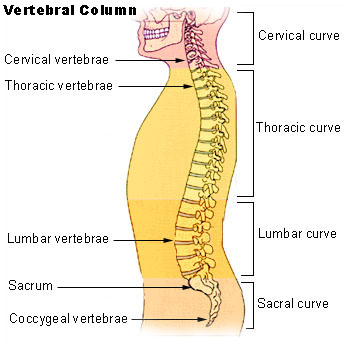
Thanks to Reggie Edgerton of UCLA, Susan Harkema of the University of Louisville, and their colleagues from UCLA, Caltech, the University of Louisville, and various medical institutes, a paralyzed man is able to stand on his own feet. The 26 year-old Rob Summers, who had been paralyzed from the chest down after a hit-and-run car accident in 2006, can now stand without external support for up to 25 minutes at a time.
The doctors implanted a 16-electrode array on Summers’ dura (the outermost membrane around the spinal cord). Although the injury had been between the C7 and T1 vertebrae (see diagram left), the electrodes were implanted far lower, in the L1 to S1 region. After several weeks of training Summers was able to support his own weight during electrical stimulation. He was not only able to voluntarily move his limbs but even regained some bladder, bowel and temperature control, an unexpected bonus of the treatment.
This technique had been successfully tested in animals, but this was the first successful trial in a paralyzed human. The research team has received approval to try the epidural stimulation procedure on four more patients.
You can watch the researchers’ explanation below.











